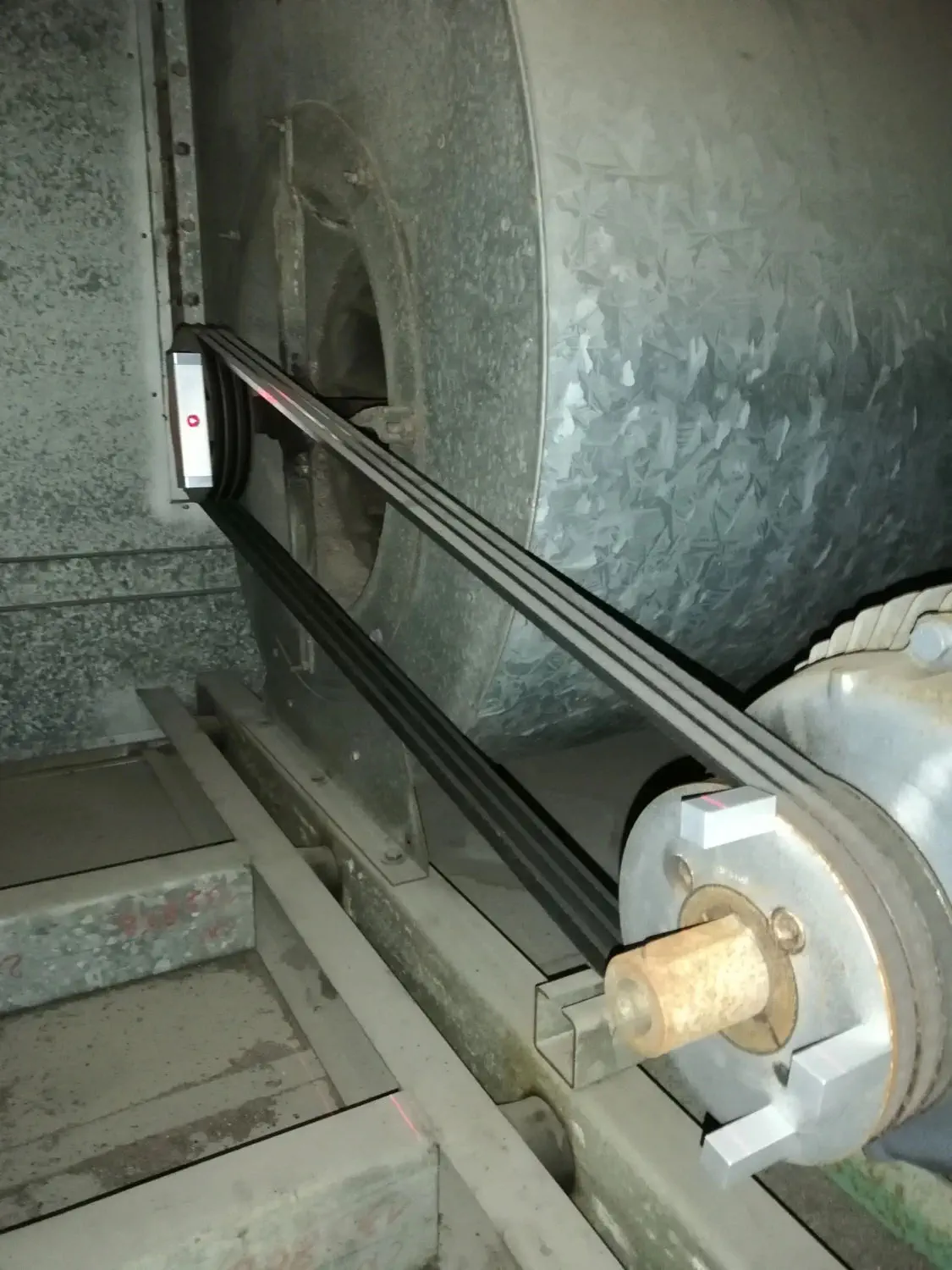Belt drives are one of the most common and versatile solutions for power transmission in a wide range of industrial machinery, from the food industry to mechanical production. However, to ensure belt drives operate efficiently and reliably, proper alignment is essential. Misalignment can lead to premature wear, power losses, vibrations, and even component failure.
In this article, we’ll explore the secrets to proper belt drive alignment, offering practical advice to achieve optimal performance and extend the system’s lifespan.
🔧 What Is Belt Drive Alignment?
Belt drive alignment refers to the correct positioning of the drive shafts and pulleys relative to the belt. If the shafts are not properly aligned, additional friction forces and uneven load distribution occur, which can reduce system efficiency and damage components. Misalignment can also lead to belt wear, resulting in premature breakage or slippage.
🛠️ Essential Tools for Accurate Alignment
To perform precise belt drive alignment, you need the right tools. Here are some commonly used alignment tools:
1. Laser Alignment Tools
Laser alignment tools are among the most accurate methods for checking belt drive alignment. These devices project a laser beam that helps align shafts and pulleys precisely. They offer high precision and are easy to use, reducing human error.
Advantages:
-
High accuracy
-
Easy to use in complex environments
-
Minimizes human error
2. Mechanical Alignment Tools
Mechanical tools, such as dial indicators or spirit levels, are more traditional methods. They are useful for manual alignment tasks but require more experience and precision.
Advantages:
-
Cost-effective
-
Suitable for small machinery
-
Practical for simple alignment tasks
3. Offset Indicators
Offset indicators measure the deviation or displacement between shafts and pulleys. These tools help determine whether the shafts are parallel and correctly aligned along the axis.
🔄 How to Check Belt Drive Alignment
Regularly checking belt drive alignment is key to preventing component damage and improving performance. Here’s how to check and correct alignment:
1. Visual Inspection
A simple but effective check can be done by observing the belt while it’s running. If the belt doesn’t run straight or leans to one side, there’s likely a misalignment issue.
2. Measurement with Tools
Use a laser or dial indicator to measure alignment between the drive shaft and pulley. Readings should show minimal or no deviation.
3. Vibration Monitoring
Another way to detect misalignment is by monitoring vibrations. High vibration levels may indicate that the system is misaligned, causing excessive wear and reduced efficiency.
🔧 How to Perform Proper Alignment
1. Shut Down and Lock Out the System
Always turn off the system before making adjustments. Unlock the belt and any connected components to ensure safe and accurate alignment.
2. Adjust Shafts and Pulleys
Using your chosen alignment tool, carefully adjust the shafts and pulleys until they are perfectly aligned. Make sure the shafts are both parallel and perpendicular to the belt.
3. Recheck Alignment
After making adjustments, verify the alignment again with your alignment tool to confirm everything is correctly set.
4. Reinstall the Belt
Once shafts and pulleys are aligned, reinstall the belt and check the tension. Ensure the tension is optimal to avoid slippage or excessive belt wear.
🌟 Conclusion
Proper belt drive alignment is essential for ensuring optimal performance, extending belt life, and reducing maintenance costs. By using the right tools and following these steps, you can optimize belt drive operations, avoid breakdowns, and improve overall system efficiency.
Remember, precise alignment not only reduces maintenance costs but also enhances safety, reduces energy consumption, and increases overall machine productivity.

